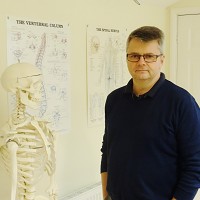
Knee Pain
The knee joints are the largest joints in the body and are put under a huge amount of pressure over a lifetime. They have to carry full body weight to allow all the activities that we take for granted, such as walking, climbing, bending and kneeling. In activities such as squatting, for example, there is the equivalent of 7 times our body weight compressing the knee cap onto the underlying bone. These stresses are enormous and although normal, can, at times, lead to problems.
The knee can be separated into 2 parts: firstly, the joint where the thigh bone (femur) and shin bone (tibia) join and, secondly, the joint between the patella (knee cap) and the underlying groove on the lower end of the femur. Together they form the knee joint complex.
Broadly speaking problems with the knee joint can be divided into 3 main areas:
1) Problems that arise within the knee joint itself. This includes osteo-arthritis, which is a wearing of the cartilage that covers the bone ends that allows the joint to move efficiently, and damage to another piece of cartilage called the meniscus. The meniscus is a ‘shock absorber’ within the knee that can be torn with injury such as twisting, often associated with a sporting event.
2) Damage or injury to the structures that are found on the outside of the knee joint. These include muscles, ligaments, tendons and other soft tissues. Again, problems here are often associated with injury.
3) Biomechanical problems. This type of pain is one where some of the structures around the knee are painful but the cause of the pain is related to the ‘mal-alignment’ of the knee joint or other joints that can influence the knee joint. An example of this would be for someone who has fallen arches in their feet. This would directly cause the leg, including the knee, to rotate inwards which would then change the way the knee joint operates, increasing the pressure the joint is under. This increase in pressure on the joint could then lead to pain. In this instance treatment would be aimed at supporting the arches of the feet to help re-align the knee and, therefore, allow the knee to work in a more normal way. This type of pain is often unrelated to injury.
Of course, in reality, people often have a combination of influencing factors that lead to knee pain and careful assessment is needed to identify these factors. Only then can a treatment and exercise plan be devised. Knee pain can be very debilitating but is often very treatable allowing the individual to return to normal activities and function.




